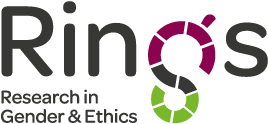Introducing Richard Mangwi Ayiasi: Gender dynamics in access and utilisation of maternal and newborn services among internal migrants in Uganda
Richard is a recipient of a RinGs’ small research grant. Within this blog post he describes how he became interested in gender and maternal and newborn health, and what led him to develop this research project.
Richard Mangwi Ayiasi

Richard Mangwi Ayiasi is a recipient of a RinGs’ small research grant and currently works for Makerere University within the School of Public Health, in addition to being a part of the ReBUILD Consortium. His project is titled: “Applying intersectionality to explore gender dynamics in access and utilisation of maternal and newborn services among internal migrants settled in the sugar-cane growing region of Masindi district, Uganda.”
I am a medical doctor by training. I hold a bachelor degree in medicine and surgery of Makerere University, Uganda. My interest in gender and gender related issues has been growing partly because of my doctoral research work among pregnant women, but most importantly because my wife Alice is a gender specialist. My wife has worked extensively on gender issues among internally displaced people in Gulu, Kitgum and Amuria, among refugees in Adjumani and Kyangwali. Currently she is working as a gender programme coordinator with American Refugee Committee in Mogadishu, Somalia. She has shared with me her experiences about gender, gender-based violence, gender-mainstreaming and power relations in gender. Through this regular knowledge transmission, I got to realise that health systems and epidemiological research approaches may not sufficiently explain certain phenomenon hence the need for methodological diversification. After my first degree I decided to conduct my internship in St Mary’s Hospital Lacor, Gulu in northern Uganda. I made this decision deliberately. This was the region that was ravaged by civil war for nearly two decades. I wanted to offer my services where I thought it mattered most. One year later I moved to a further rural district in Adjumani and worked as a medical officer for five years. During these five years I was exposed to maternal and newborn conditions. I interacted with pregnant women and postnatal women routinely. Occasionally I made community visits together with community health workers, at that time called Community-Based Distribution Agents (CBDA). Their main function was to counsel and offer contraceptive advice to women.
However during these visits we screened women for other obstetric and gynaecological conditions. During these screening exercises I learnt that many women were silently suffering from conditions that had ready medical remedies. For example women that had third degree perineal tears following previous difficult deliveries and had separated with their spouses meaning that they could not engage in sexual intercourse and could not bear any more babies (not bearing babies in Uganda is stigmatising). These five years were my first and closer understanding of the plight of pregnant women. I wanted to do more in order to make them understand that care was available at the hospital. Slowly, I learnt that information to women alone was not adequate to encourage them to utilise maternal and newborn services. I learn that the decision process was more complex.
Based on my prior five year experience I got another job as a hospital manager (medical superintendent) in the neighbouring Moyo hospital which is located about 10-15 kilometres from the Uganda-South Sudan border. The prevailing decentralised policy automatically made me in charge of the primary health centres as well as the hospital. I took this opportunity to influence health service organisation to favour prenatal and intra-natal services in the primary health care centres as well as the hospital. Together with my team at the hospital, we introduced household campaigns to induce further demands for maternal and newborn health services. Simultaneously, we introduced emergency response mechanism involving the primary health centres, ambulance services and emergency theatre staff at the hospital. Full maternal mortality audits were conducted from the hospital to the community to find out where such mortality originated from. These worked so well that skilled attendance in my district more than tripled within two years, numbers of absolute maternal mortality significantly reduced and neonatal mortality was halved from 4% to 2%. At that time I had very minimal research orientation so most of my experiences went undocumented. Nevertheless, I learnt that effective maternal neonatal health services could be organised and delivered with minimal financial resources.
I have been doing research in maternal and newborn health for the last five years. My topic is related to providing relevant health messages to pregnant women so that they get better prepared to care for their pregnancies and newborn babies. We have used community health workers (in Uganda known as VHTs-Village Health Teams) to give this information to women in their homes. We provide mobile phones to VHTs and health workers so that VHTs can consult health workers for advice during the process of offering educational messages. In spite of these interventions we have noticed that internal migrants are still utilising maternal and neonatal services less compared to indigenous populations. Some of the epidemiological research methodologies we have used have not offered sufficient explanation for this phenomenon so far. Hence the decision to apply the intersectionality methodology whereby gender may intersect with other aspects of life, such as being a woman, being an internal migrant, or power imbalances and access to resources and decision-making at the household level. We are optimistic that this methodology will yield additional data upon which we can advise for equitable maternal and newborn health services to the women in Masindi district.

